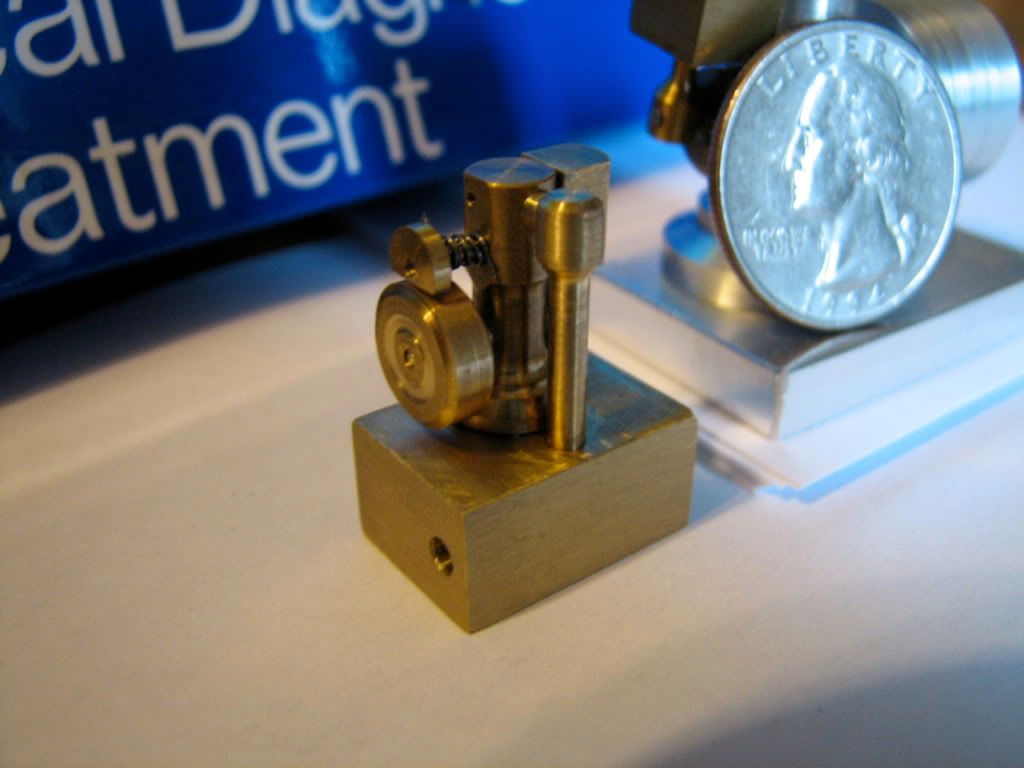This is the schematic of the planned air supply... I have to change the CAD settings (re: number of points drawn) -- see that circles are rendered as polygons... But that's fine...

This is the 1/2 scale of the tiny where I came up with the idea... Air is pumped into the hole in the base, and then goes up in the vertical tube and then through a bridge to the inlet...

I'll try to turn the tiny metal tubes out of brass -- If I cannot I'll resort to syringes...
Now I'll admit that I did shy away from my original plan, which was to drill a hole from the base upwards, to meet the blind hole of the inlet port... In other words, 'replace' the vertical column with a hole that is in the column body a few thousands below the surface... It is theoretically possible, I can draw it, can't I? oh: The neat thing would be that that version would leave you scratching your head to see where the air comes from...
oh: The neat thing would be that that version would leave you scratching your head to see where the air comes from...
Oh well, we know what to do in version 2...
thanks for your pointers gents,
take care,
tom

This is the 1/2 scale of the tiny where I came up with the idea... Air is pumped into the hole in the base, and then goes up in the vertical tube and then through a bridge to the inlet...

I'll try to turn the tiny metal tubes out of brass -- If I cannot I'll resort to syringes...
Now I'll admit that I did shy away from my original plan, which was to drill a hole from the base upwards, to meet the blind hole of the inlet port... In other words, 'replace' the vertical column with a hole that is in the column body a few thousands below the surface... It is theoretically possible, I can draw it, can't I?
Oh well, we know what to do in version 2...
thanks for your pointers gents,
take care,
tom












![DreamPlan Home Design and Landscaping Software Free for Windows [PC Download]](https://m.media-amazon.com/images/I/51kvZH2dVLL._SL500_.jpg)




















